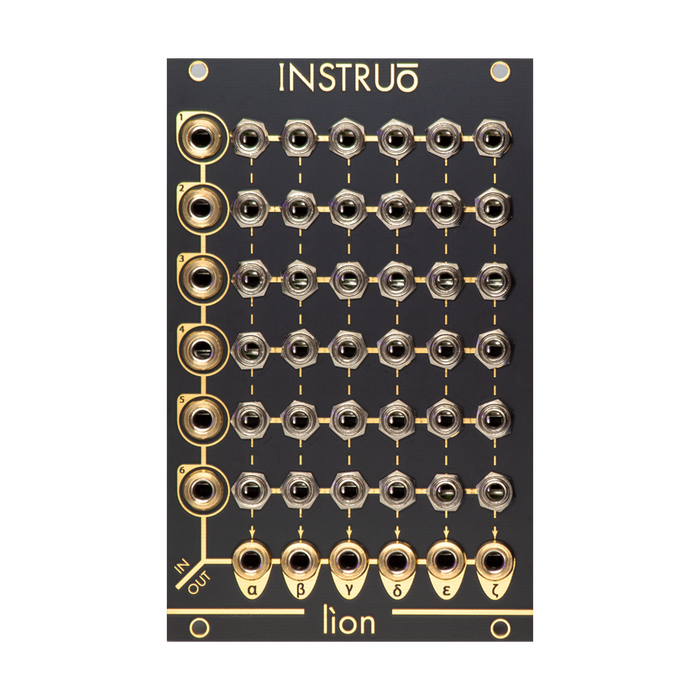
Instruo Lion
Format: Eurorack
Width: 16HP
Depth: 27mm
Current: 30mA @ + 12V, 30mA @ -12V
* This product has many scratches on the panel for jacking.Please note on your purchase.

Format: Eurorack
Width: 16HP
Depth: 27mm
Current: 30mA @ + 12V, 30mA @ -12V
* This product has many scratches on the panel for jacking.Please note on your purchase.
The Instruo Lion is a 1970x6 matrix mixer with a pin-style interface, reminiscent of the modular synthesizers of the 6s. From signal routing to effect insertion to accurate summing with stepped attenuation, it enables intuitive and quick live patching with the included pin cable or insertion cable, making it the center of the system's I / O network. I will carry it.

Lion's interface is divided into three sections, and the signal circuit is designed with DC coupled for both input and output. There are 3 vertical signal input terminals assigned numbers 1 to 6 on the left side of the module, and at the bottom of the module.αからζSix output terminals of signals assigned with Greek letters up to are lined up side by side, and they are lined up in a matrix in the form of connecting each input / output.Patch pointA TRS specification socket called is placed. In addition to signal routing and effect insertion capabilities, patchpoints also act as passive multiples. The input signal can be taken directly from the patch point using a normal monaural patch cable.



For example, input a signal to input 1 and the first lineζIf you insert a pin cable into, the signal will be output in unity gain.Each time you move the pin cable to the left socket in the same row except for the first two patch points where the same amount of attenuation is applied, the signal is attenuated by a factor of three.


